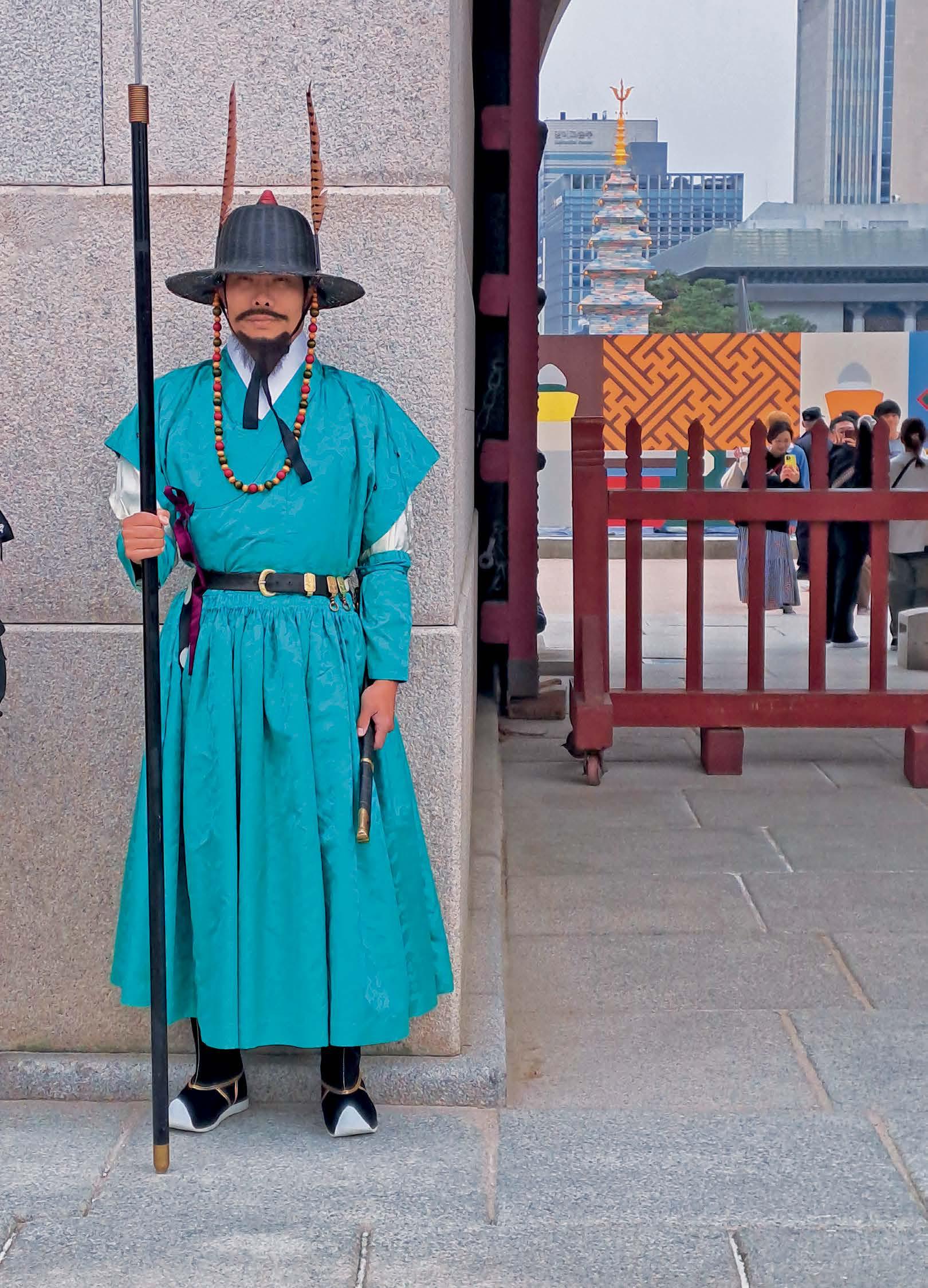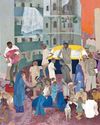
Two weeks in Seoul, South Korea's bustling capital, is just not enough time to explore all it has to offer. With ancient temples, palaces and fortress walls rubbing shoulders with sparkling contemporary architecture, exquisite mountain landscapes, parks and forests, plus pumping nightlife and outdoor markets galore, Seoul really has something for everyone.
Founded as the capital of the unified Korean peninsula in 1394, Seoul sits in a basin and is surrounded by four low mountains, which provided a natural defence to the fledgling kingdom. To reinforce this defence, several years into the Joseon Dynasty (1392-1910) construction started on a wall along the mountain ridges. Much of the fortifications remain today (some have been rebuilt) and are a magnet for tourists.
On our first day in Seoul, we decided to do something cultural and headed to Gwanghwamun Square and Gyeongbokgung—the largest of the five remaining gung or palaces in Seoul—where the history of the Joseon Dynasty began. We were going to take a bus from our hotel in the central district of Myeongdong, but there was such a vibrant atmosphere when we stepped onto the street, we decided to walk. Sejong-daero, the main thoroughfare that passes City Hall and leads to Gwanghwamun Square, was festooned with colourful lanterns—and being a Sunday, the mood was positively festive. We discovered later that many streets and temples across the country are decked out with the lanterns and other decorations during April and May to celebrate Buddha’s birthday.
This story is from the {{IssueName}} edition of {{MagazineName}}.
Start your 7-day Magzter GOLD free trial to access thousands of curated premium stories, and 9,000+ magazines and newspapers.
Already a subscriber ? Sign In
This story is from the {{IssueName}} edition of {{MagazineName}}.
Start your 7-day Magzter GOLD free trial to access thousands of curated premium stories, and 9,000+ magazines and newspapers.
Already a subscriber? Sign In

BOOKS
Books review

STUDIO - Off Lamington Road by Gieve Patel
Oil on Canvas, 54 x 88 in

NEWS FROM THE WORLD OF MEDICINE
FOODS THAT FIGHT DEMENTIA

TO HELL AND BACK
The Darvaza crater in Turkmenistan is known as the Gates of Hell. I stood on its edge - and lived to tell the tale

THE SNAKE CHARMERS
Invasive Burmese pythons are squeezing the life out of Florida's vast Everglades. An unlikely sisterhood is taking them on

Sisterhood to Last a Lifetime
These college pals teach a master class in how to maintain a friendship for 50-plus years

...TO DIE ON A HOCKEY RINK
ONE MINUTE I WAS PLAYING IN MY BEER LEAGUE, THE NEXT I WAS IN THE HOSPITAL

Just Sit Tight
Broken, battered and trapped in a ravine for days, I desperate driver wonders, \"Will anyone find me?\"

Allow Me to Mansplain...
If there's one thing we know, it's this: We're a nation of know-it-alls

THE BITTER TRUTH ABOUT SUGAR (AND SUGAR SUBSTITUTES!)
It's no secret that we have a serious addiction. Here's how to cut back on the sweet stuff, once and for all.